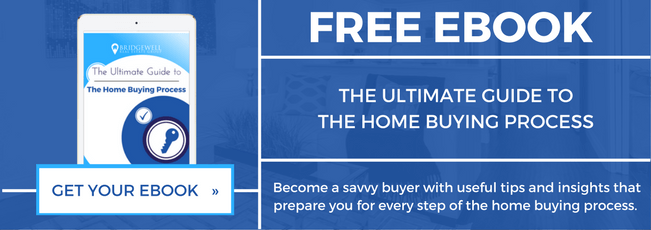First Time Home Buyer Guide: How the Real Estate Process Works
Real Estate 101 for First Time Home Buyers
Buying your first home isn’t the easiest thing to do, especially when that home you’re purchasing is in Greater Vancouver.
This blog goes over the 7 essential steps you’ll encounter throughout your first time buying a home.
We cover everything from determining your budget to closing & moving in! This is also probably the biggest investment you’ve ever made, so the more you know, the better off you’ll be.
So put on your big girl (or guy…) pants, buckle down, and read our first time home buyer guide with the 8 steps that we have for you below:

first time home buyers…
STEP 1: Get Pre-approved for a Mortgage
Knowing how much you can afford to spend on a home and finding the right way to finance it are two of the easiest ways to increase the comfort of home ownership. While an online financial calculator will help you ballpark your affordability, because there are so many factors like maintenance fees, credit score, or whether you’re salary, hourly or self-employed you won’t know how much you can actually afford until you talk to a lender.
Getting pre-approved for a mortgage involves a mortgage broker or the bank taking all of the necessary steps to qualify you, lock in an interest rate (they’ll typically hold that rate for 120 days), and collect your documents so you’re ready to go when you have an accepted offer. With interest rates on the rise, locking in your rate via a pre-approval can help to save you money on a monthly basis upon completion.
The pre-approval process will also save you time. There’s nothing worse than spending 4 weeks house hunting only to find you can afford $50,000 less than you’ve expected. Knowledge is power, and that’s exactly what a pre-approval gives you.
STEP 2: Set your needs and wants
Write a list of your top 5 absolute needs (i.e. # of bedrooms, bathrooms) – things that you cannot live without, and then write a list of your top 5 wants – things that would be nice to have, but aren’t absolutely necessary. Remember to be realistic and always consider your budget.
Having something that you want may feel good in the short term, but being stretched too thin and not being able to pay your bills because you over-extended your wants can be a very uncomfortable place to be!
STEP 3: Pick your REALTOR
Buying a home is a very large event in life, so it’s not something that should be done without the help of a trained real estate professional.
Your realtor will be helping you to determine what you want, write your contract for you, negotiate on your behalf to get the best price, review all documents with you, and make sure the process from acceptance to completion is smooth. With them being such a large part of the process, it’s important that you make sure that you find someone that has experience, understands the market, you trust, and you know has your best interests at heart.
What’s more is to hire someone that you feel is going to educate you along the way and make sure you feel confident in your decisions. You absolutely need to be aware of what’s going on, and not just feel like a fly on the wall! It is YOUR investment.
The great thing about hiring a buyer’s agent is that it’s FREE! (the seller pays the buyer’s agents commission) For more information on what the buyer’s agent does and how we can help you check out: Buying with Bridgewell
STEP 4: Go house hunting
Now that you’ve found out how much you can afford and chosen your awesome realtor to work with, it’s time to start the house hunt.
Start with a type of home, then re-evaluate your budget with closing costs factored in, then select a city, and from there narrow it down to a subarea within that city. Consider transportation, your favourite restaurants, what you like to do, the demographic of people, etc. It’s more than just about price.
While Realtor.ca, REW.ca, and/or Zolo.ca are good places to start, your chosen real estate agent also has the power to create a more refined search for you and send only the exact properties you’d be interested in directly to your email. Once you’ve seen a couple of houses, this is the time to refine your needs and wants list, and ask questions.
If you’re interested in having auto-notifications set up so you can receive all of your dream new listings right to your email as soon as they’re listed, contact us.
STEP 5: Make an offer, negotiate, and get an accepted offer
Congratulations!! You’ve gone house hunting, found the right home for you, it’s in your price range, and it meets all your needs (and hopefully some or all of your wants!) The offer process can be exciting, but it can also be nerve-wracking.
The Contract of Purchase and Sale is the document that outlines your offer price, the completion/possession/adjustment dates, the included items (washer/dryer/fridge/stove, etc.), and the subjects and terms that need to be met in order for the deal to become “firm.” Once you’ve submitted your offer, the seller has the option to accept it as it, reject it completely, or send back a counter offer.
Keep in mind, when you or the seller counters an offer, the previous offer is null and void. Which means you should be extra careful when countering. Remember, this is a negotiation – not a “give me everything, I want it all my way” type of deal. During these negotiations you may need to compromise on some things, but a good realtor will work hard to get you exactly what you need and want.
Read more on how to win a multiple offer scenario.
STEP 6: Remove subject(s) and turn in the deposit
Here is an example of how subject removal might go:
Monday (November 14) – You put in an offer with your realtor & it is accepted, subject to financing, subject to inspection, subject to receiving and approving the title search, and subject to receiving and approving the property disclosure statement.
Monday (November 14) until following Monday (November 21) – Begin working to remove all subjects. Hire and schedule a home inspector to come by at least 2 days before the date of subject removal. Notify your bank that you have an accepted offer and have them begin the official financing approval process. Obtain all documents including the title search, property disclosure statement, and strata documents (if necessary) to begin reviewing. Follow up on any questions or concerns you may have with the listing agent.
By the subject removal date (Monday November 21), you have two options:
- Remove the subjects, and hand in your deposit of the purchase price. The deal is now firm.
- You do not remove subjects because you do not approve of 1 or more of the subjects and the deal collapses. (i.e. you weren’t satisfied with the inspection report) **if you do not remove subjects, you do not need to pay the 5% deposit if the contract is written correctly.**
The contract itself states that the deposit is due within 24 hours of acceptance unless otherwise stated (we always make sure that in our contracts the deposit is due within 24 hours of subject removal – so you don’t ever lose any money if subjects aren’t removed).
If your money is in an RRSP, investments, or possibly even a TFSA, you may not be able to access it that quickly or could be forced to sell any investments at a loss if it’s been a bad week. Believe it or not, I’ve had situations where it took 30 days to take money out. Always make sure that your deposit is ready and in your bank account as liquid funds (cash) BEFORE writing an offer so that you don’t miss out on your dream home.
If I’m going way over your head for this step, then read our post on Subject Removal 101
STEP 7: Prepare until closing day
The tough part is over and now you just need to prepare. Get some extra boxes and start to pack, inform your bank, library, and other services you use that you’re changing your mailing address, and choose your notary or lawyer if you haven’t done so already.
Make sure that you have estimated for all closing costs, have your lawyer or notary give you an accurate estimate based on the subject property so that you have the money ready for your closing date. Some closing costs you’ll likely need to consider are strata maintenance fee adjustments, property tax adjustments, property transfer tax (PTT), legal fees, utilities, and/or strata move in fees. For everything you need to know and plan for when it comes to closing costs, check out our blog here: Closing Costs 101
You’ll also want to ask your team of professionals about exemptions. Many first time home buyers are eligible for a PTT exemption if they’re a Canadian citizen or permanent resident, purchasing a resale property under $500,000, and using it as their primary residence. If you’re looking for more information on whether you will have to pay PTT, read out post: Property Transfer Tax Cost, Information & Exemptions
STEP 8: Close the deal and move in!
If you’ve followed all of the steps you should be prepared – you’re almost a homeowner!
Closing is the day in which title is transferred from the seller to the buyer as per the Land Title Office. Although closing and possession can sometimes be on the same day, they are typically 1-2 days apart from each other.
Closing the deal is a team effort – you’ll be asked by your notary or lawyer to go in and review and sign the legal documents, your lender will prepare the final mortgage documents, and your realtor will be provided any additional documents needed by their conveyancing team. At closing, you’ll also have to pay the closing costs (discussed in point 7). Once completion is done, prepare for move in. Congrats, you’re a homeowner!
_____
We hope that this first time home buyer guide helped to get you started! If you’re looking for a realtor that specializes in helping first time home buyers, then let us walk you through the process. Call or text 604-319-0200 or email [email protected] to start a conversation about your first home purchase today.



